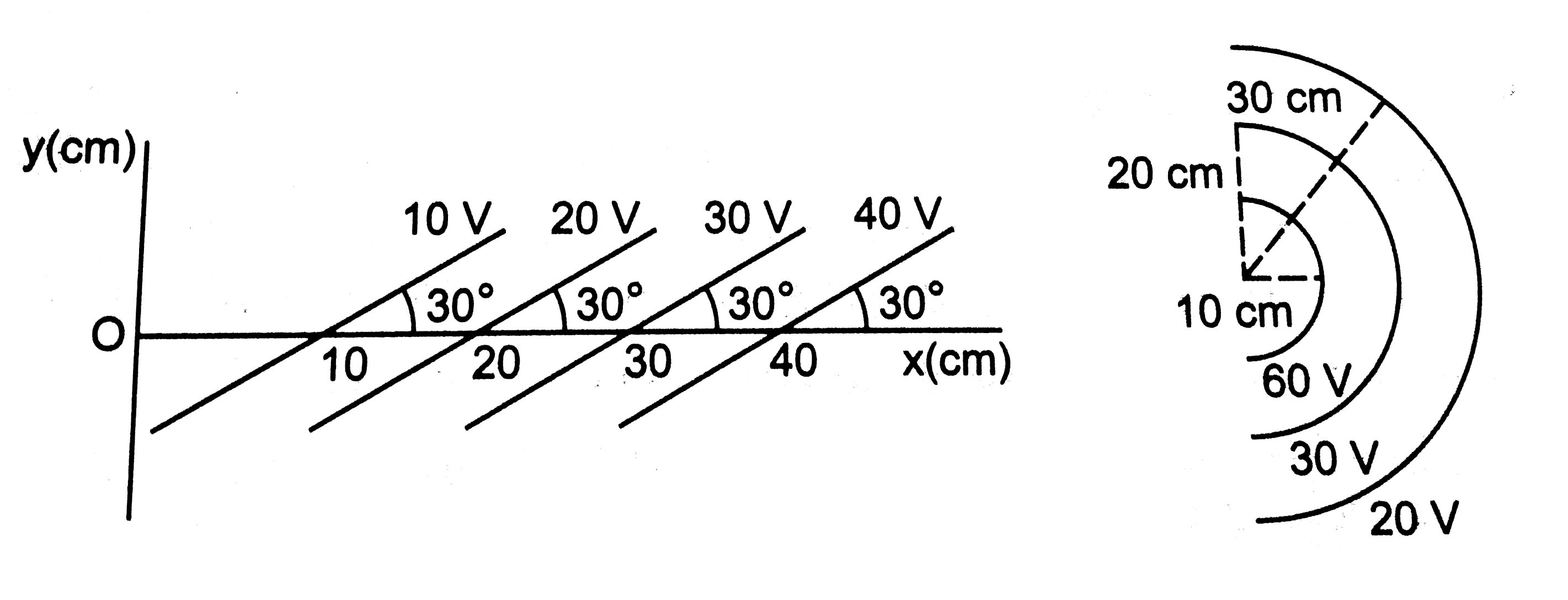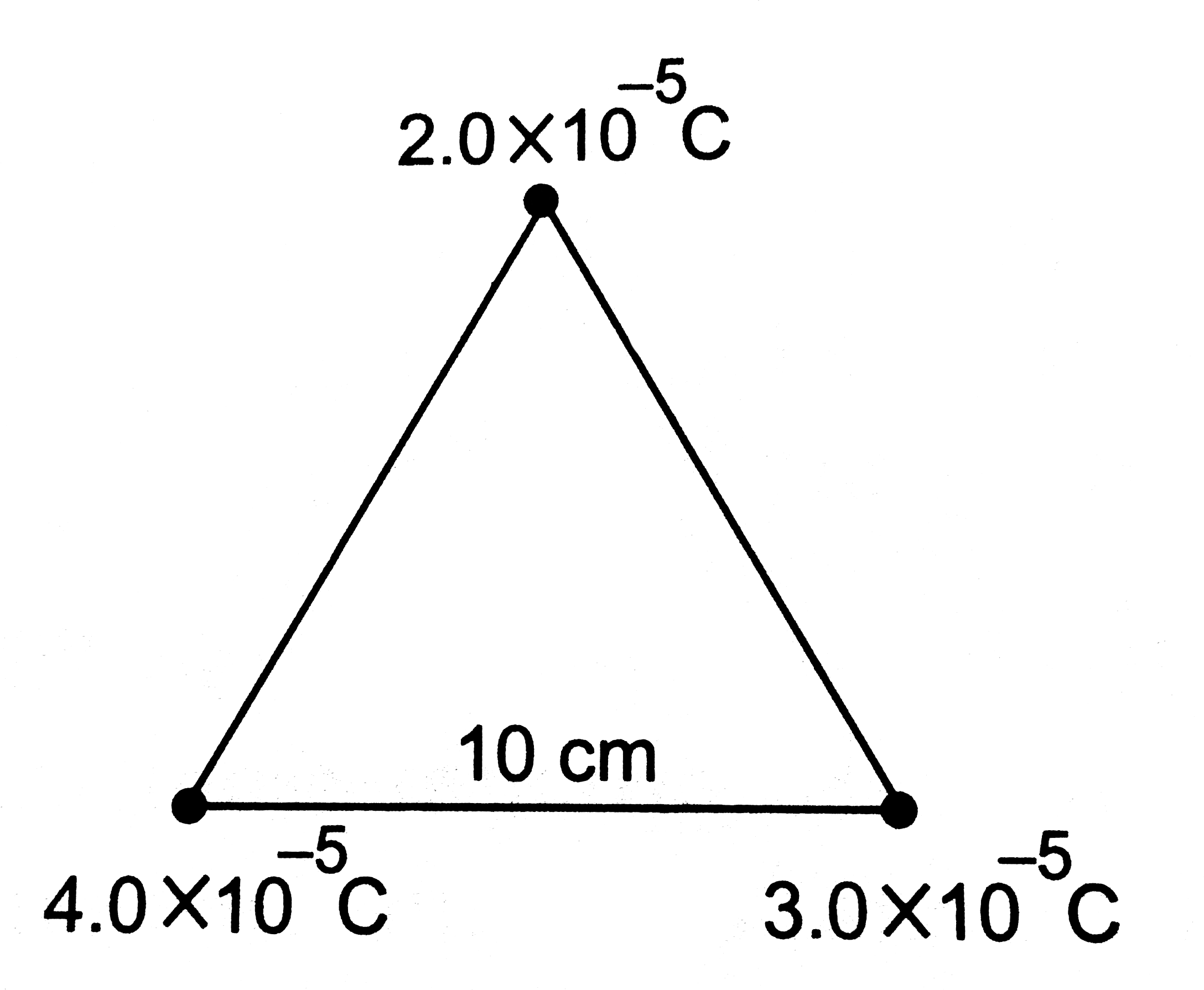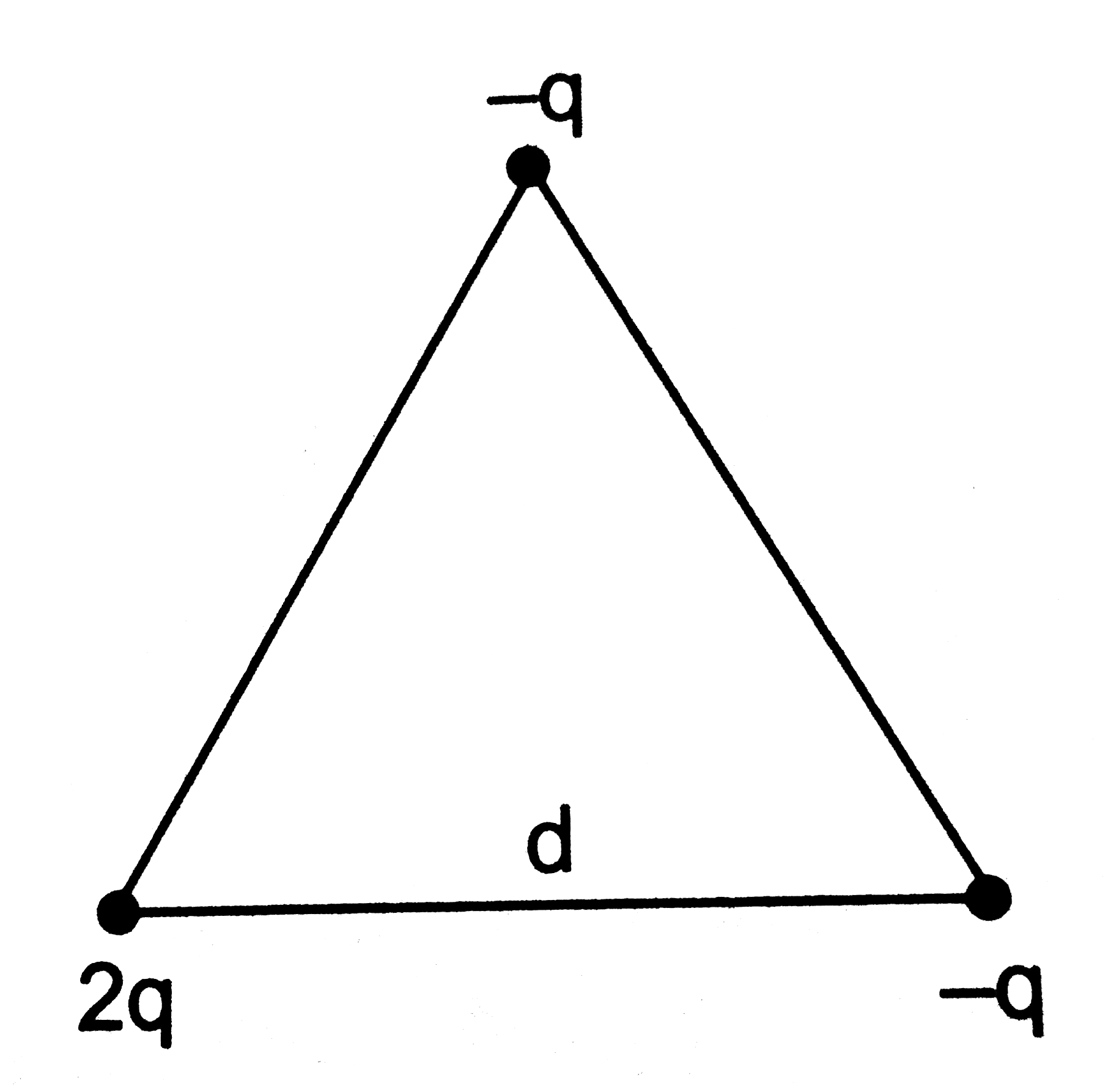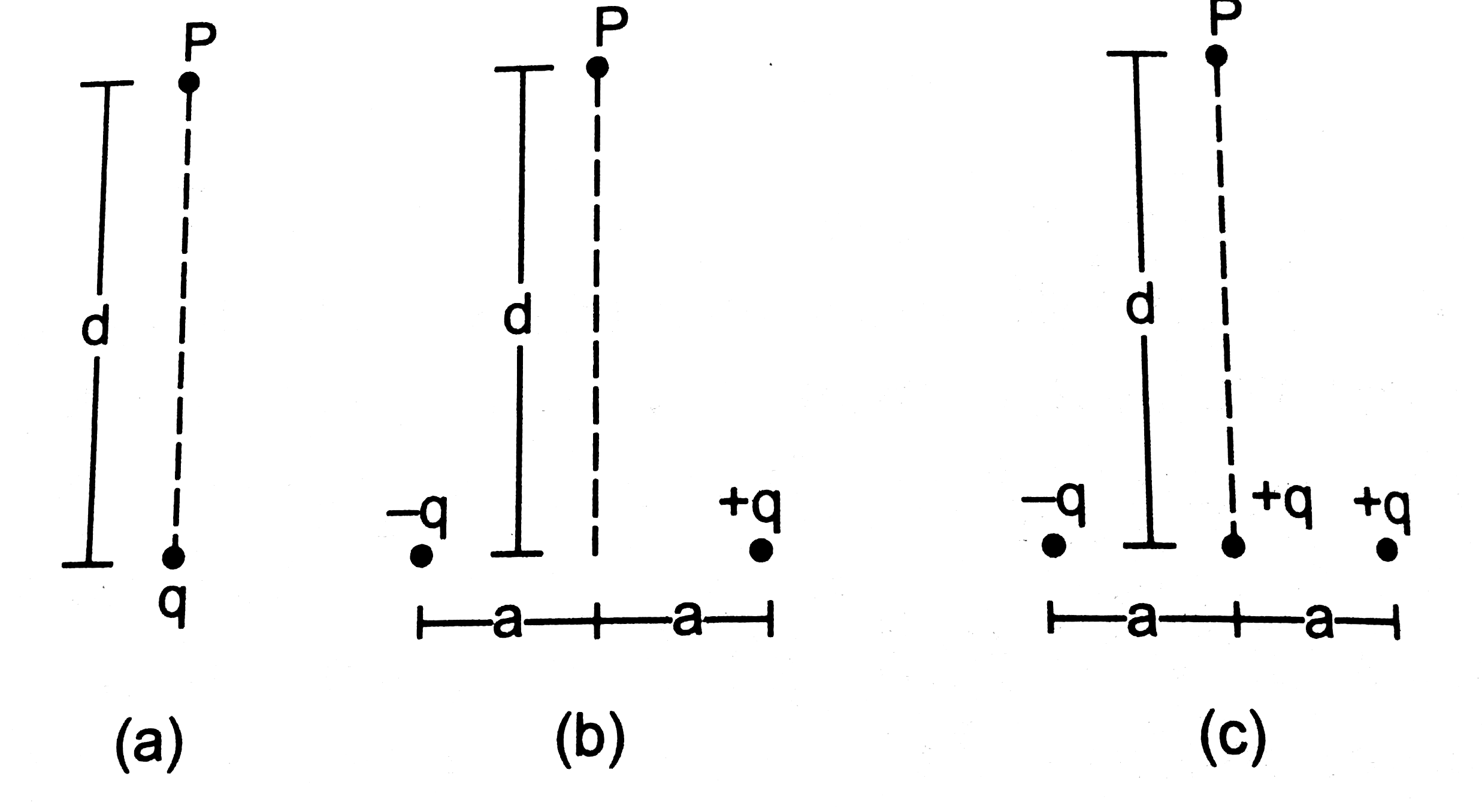Exercises from HC VERMA ELECTRIC FIELD AND POTENTIAL for Class 12
| Class 12 | PHYSICS |
| Chapter | ELECTRIC FIELD AND POTENTIAL |
| HC VERMA | Exercises |
| Medium | English |
| Academic Year | 2023-2024 |
Question 10
Suppose all the electrons of 100 g water are lumped together to form a negatively charged particle and all the nuclei are lumped together to form a positively charge particle. If these two particles are placed 10.0 cm away from each other, fien the force of attraction between them. Compare it with your weight. View SolutionQuestion 13
Na Cl moecule is bound due to the electreic force between the sodium and the chlorine ions when one electron of sodium and the chlorine ions when one electron of sodium is transferred to chlorine. Taking the separaton between the ions to be 2.75×10−8cm, find the force of attraction between them. State the assumptions (if any) that you have made.View SolutionQuestion 15
Suppose ana attractive nuclear force acts between two protons which may be written as F=Ce−kr/r2, (a) Write down the dimensional formulae and appporpriate SI units of C and k. (b) Suppose that k=1fermi−1 and that the repulsive electreic force between the protons is just blanced by the attractive nuclear force when the separation is 5 fermi. Find the value of c. View SolutionQuestion 18
A hydrogen atom contains one proton and one electron. It may be assumed that the electron revolves in a circle of radius 0.53 angstrom (1angstrom=10−10 m and is abbreviated as A) with the proton at the centre. The hydrogen atom is said to be in the ground state in this case. Find the magnitude of the electric force between the proton and the electron of a hydrogen atom in its ground state.View SolutionQuestion 20
Ten positively charged particles are kept fixed on the x-axis at points x=10cm, 20cm, 30cm, …, 100cm. The first particle has a charge 1.0×10−8C, the second 8×10−8 C, the third 27×10(−8)C and so on. The tenth particle has a charge 1000×10−8C. find the magnitude of the electric force acting on a 1 C charge placed at the origin. View SolutionQuestion 22
Two indentical balls, each having a charge of 2.00×10−7C and a mass of 100g , are suspended from a common point by two insulating strings each 50 cm long. The balls are held at a separation 5.0cm apart and then released. Find (a) the electric force on one of the charged balls (b) the components of the resultant force on it alongand perpendicular to the string (c) the tension is the string (d) the components of the resultant force on it along and perpendicular to the string(c) the tension in the string (d) the acceleration of one of the balls. Answers are to be obtained just after the release. View SolutionQuestion 23
Two identical pith balls are charged by rubbing against each other. They are suspended from a horizontal rod through two strings of length 20 cm each, the separation between the suspension points being 5 cm. in equilibrium, the separation between the balls in 3 cm. Find the mass of each ball and the tension in the strings. the charge on each ball gas a magnitude 2.0×10−8C.View SolutionQuestion 27
Two particles A and B having charges q and 2q respectively are placed on a smooth table with a separation d. A third particle C is to be clamped on the table in such a way that the particles A and B remain at rest on the table under electrical forces. What should be the charge on C and where should it clamped? View SolutionQuestion 28
Two identically charged particles are fastened to the two ends of a spring of spring constant 100Nm−8C, find the extension In the length of the apring. Assume that the extension is small as scompared to the natural length . Justify this assumption after you solve the problem.View SolutionQuestion 29
A particle A having a charge of 2.0×10−6C is held fixed on a horizontal table. A second charged jparticle of mass 80g stays in equilibrium on the table at a distance of 10 cm from the firsst charge. The coefficient of friction between the table and this second jparticle is μ=0.2. find the range within which the charge of this second particle may lie. View SolutionQuestion 32
Two particles A and B , ech carrying charge Q are held fixed with a separation D between them. A particle C having mass m and charge q is kept at the middle point of the line AB. (a) If it is displaced throught a distance x perpendicular to AB, what would be the electric force experienced by it .(b) Assuming x ltltd, show that this force is proportional to x. (c) under what conditions will the jparicle C execute simple harmonic motion if it is released after such a small displacement? Find the time period of the oscillations if these conditions are stisfied.View SolutionQuestion 39
Positive charge Q is distributed uniformly over a circular ring of radius R. A particle having a mass m and a negative charge q, is placed on its axis at a distance x from the centre. Find the force on the particle. Assuming x ltltR, find the time period of oscillation of the particle if it is released from there.View SolutionQuestion 48
A particle of mass 1 g and charge 2.5×10−4C is released from rest in an electric field of 1.2×104NC−1 (a) Find the electric force and the force of gravity acting on this particle. Can one of these forces be neglected in comparison with the other for approximate analysis? (b) How long will it take for the particle to travel a distance of 40 cm? (c) What will be the speed of the particle after travelling this destance? (d) how much is the work done by electric force on the particle during this period?View SolutionQuestion 49
A ball of mass 100g and having a charge of 4.9×10−5 C is released from rest in a region where a horizontal electric field of 2.0×104NC−1 exists. (a) find the resultant force acting on the ball. (b) What will be the path of the ball ? (c ) Where will the ball be at the end of 2 s?View SolutionQuestion 51
A block of mass m having a charge q is placed on a smooth horizontal table and is connected to a wall through an unstressed spring of spring constant k as shown in figure(29.E1) . A horizontal electric field E parallel to the spring is switched on. Find the amplitude of the resulting SHM of the block.
 View Solution
View SolutionQuestion 52
A block of mass m containing a net positive charge q is placed on a smooth horizontal table which terminates in a vertical wall as shown in figure(29-E2). The distance of the bolck from the wall is d. A horizontal electric field E to towards right is switched on. Assuming elastic collisions find the time period of the resulting oscillatory motio. Is it a simple harmonic motion?
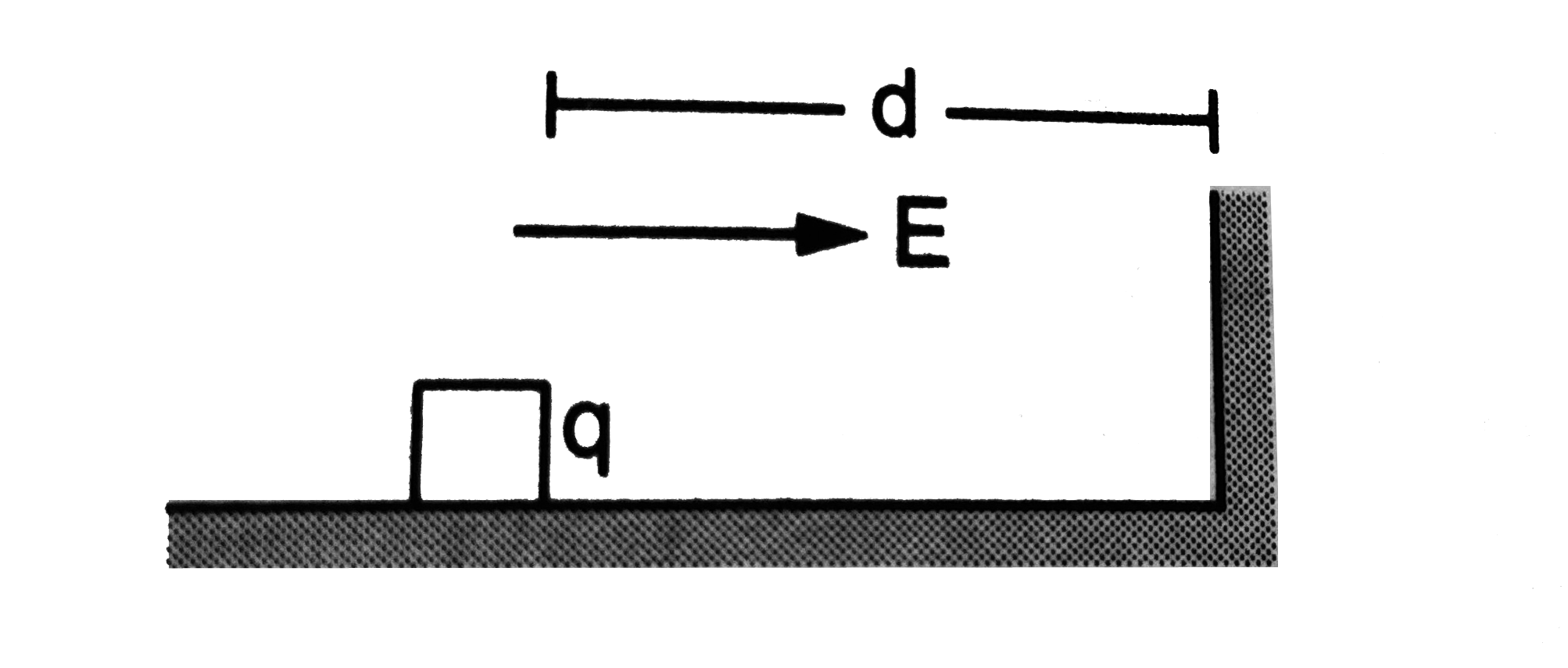 View Solution
View SolutionQuestion 64
An electric field of magnitude 1000NC−1 is produced between two parallel platees having a separation of 2.0 cm as shown in figure(29.E4) (a) What is the potential difference between the plates? (b) With what minimum speed should an electron be projected from the lower plate in the direction of the field so that it may reach the upper plate? ( c) Suupose the electron is projected from the lower plate with the speed calculated in part (b) . The direction of projection makes an angle of 60∘ with the field. Find the mazimum height reached by the electron.
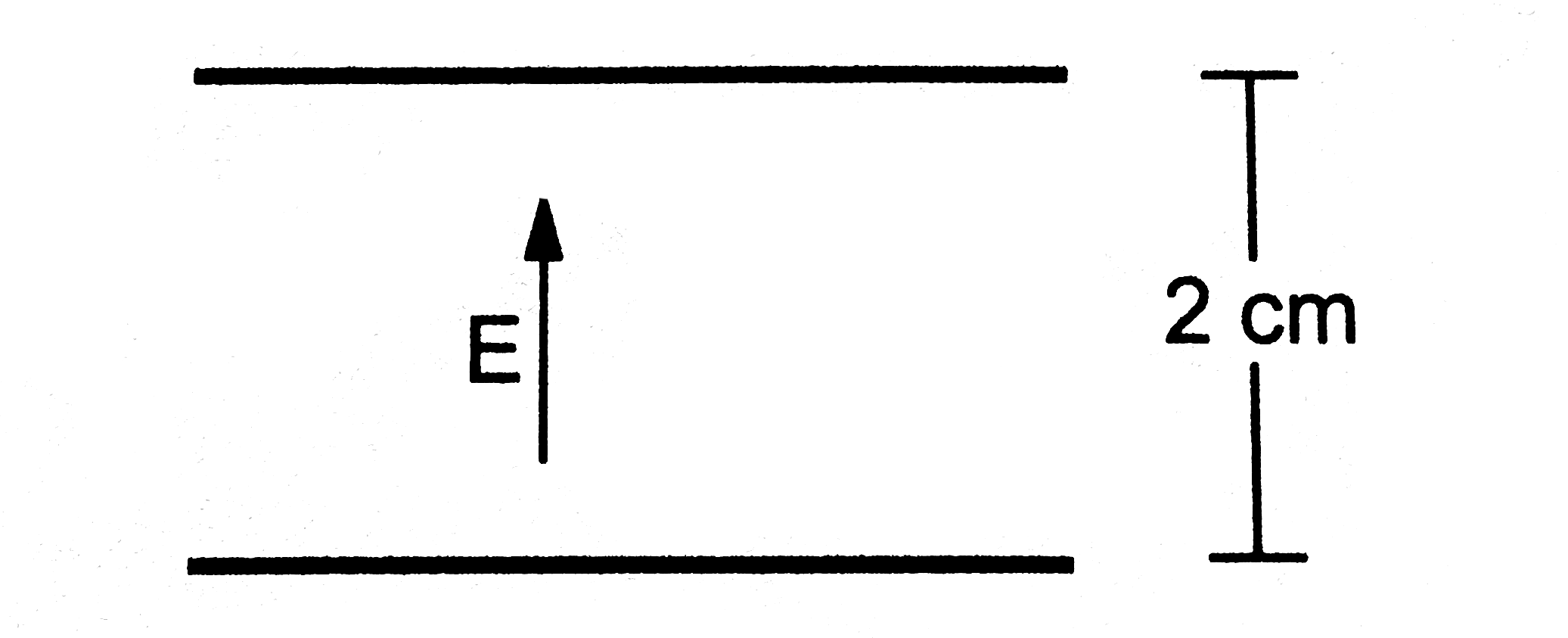 View Solution
View SolutionQuestion 65
A uniform field of 2.0NC−1 exists in space in x direction (a) Taking the potential at the origin to be zero, write an experssion for the potential at a general point (x,y,z). (b) At which points, the potential is 25V ? ( c) If the potential at the origin is taken to be 100V , what will be the expression for the potential at a general point? (d) What will be the potential at the origin if the potential at infinity is taken to be zero ? Is it parctical to choose the potential at infinity to be zero? View SolutionQuestion 71
Two particles A and B, having opposite charges2.0×10−6 and −2.0×10−6C , are placed at a separaton of 1.0 cm.(b) Calculate the electric field at a point on the axis of the dipole 1.0 m away from the centre. (c ) Calculate the electric field at a point on the perpendicular bisector of the dipole and 1.0 m away from the centre. View SolutionQuestion 74
Two particles, carrying charges -q and +q and having equal masses m each, are fixed at the rod is clamped at an end and is placed in a uniform electric field E with the axis of the dipole along the electric field. The rod is slightly tlted and then released. Neglecting gravity find the time period of small oscillations. View Solution
All Exercises from HC VERMA Class 12 PHYSICS ELECTRIC FIELD AND POTENTIAL
- EXERCISES
- EXERCISES
- EXERCISES
- EXERCISES
- EXERCISES
- EXERCISES
- EXERCISES
- EXERCISES
- EXERCISES
- EXAMPLES
- EXAMPLES
- EXAMPLE
- EXAMPLES
- EXAMPLES
- EXAMPLE
- EXAMPLES
- EXAMPLES
- EXAMPLE
- OBJECTIVE 1
- OBJECTIVE 1
- OBJECTIVE 1
- OBJECTIVE 1
- OBJECTIVE 1
- OBJECTIVE 1
- OBJECTIVE 1
- OBJECTIVE 1
- OBJECTIVE 1
- OBJECTIVE 2
- OBJECTIVE 2
- OBJECTIVE 2
- OBJECTIVE 2
- OBJECTIVE 2
- OBJECTIVE 2
- OBJECTIVE 2
- OBJECTIVE 2
- OBJECTIVE 2
- SHORT ANSWER
- SHORT ANSWER
- QUESTION FOR SHORT ANSWER
- SHORT ANSWER
- SHORT ANSWER
- QUESTION FOR SHORT ANSWER
- SHORT ANSWER
- SHORT ANSWER
- QUESTION FOR SHORT ANSWER
- WORKED OUT EXAMPLES
- WORKED OUT EXAMPLES
- WORKED OUT EXAMPLES
- WORKED OUT EXAMPLES
- WORKED OUT EXAMPLES
- WORKED OUT EXAMPLES
- WORKED OUT EXAMPLES
- WORKED OUT EXAMPLES
- WORKED OUT EXAMPLES

